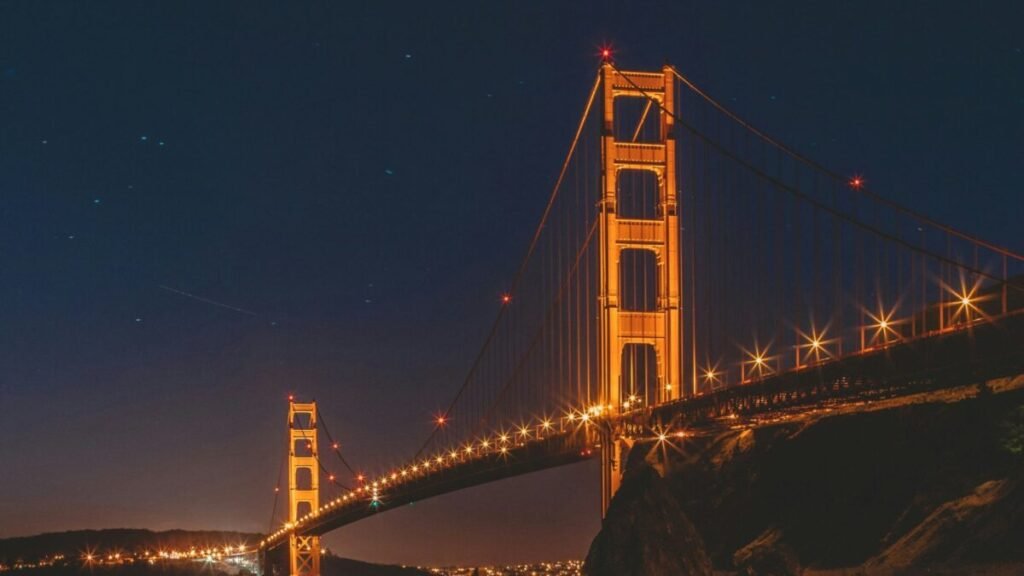Italy’s Megaproject: The world’s longest suspension bridge is already raising controversies.

After decades of frustrated plans, delays, and opposition from citizens, the Italian government has officially approved the construction of a suspension bridge that will connect the island of Sicily with the region of Calabria, in the south of the country. If materialized, it will be the longest in the world in its category, with an estimated length of 3.3 kilometers suspended over the Strait of Messina.
A project returning with stronger force than ever
The announcement was made this week by the Italian Prime Minister, who defended the project as a strategic bet for the country’s future. Alongside her, Matteo Salvini – Vice Prime Minister and current Minister of Transport – celebrated the final approval as a milestone for the development of southern Italy.
The bridge, according to the government, will not only link the peninsula and the island but also aims to boost the economy of two of the most disadvantaged regions in Europe: Sicily and Calabria.
How will the bridge be and what benefits does it promise?
According to the plans presented, the bridge will have two levels: one for railway and one for road. It will have three lanes in each direction for cars and two railway lines in the center. Its towers will reach a height of 400 meters and will be able to withstand extreme conditions, including intense seismic activities, which are crucial in this part of the Mediterranean.
The government estimates that the construction will create up to 120,000 jobs annually and stimulate the local economy. In addition to the bridge itself, the project includes about 40 additional kilometers of new roads and rail lines at both ends. To cross it, motorists would pay a fee of less than 10 euros.
One of the most striking proposals is that the project could be classified as defense spending, to help Italy meet NATO’s goal of allocating 5% of GDP to that sector.
The estimated completion date is between 2032 and 2033, although some experts doubt that the schedule will be met if administrative and social obstacles persist.
Old ghosts: mafia, ecology, and citizen opposition
This is not the first time Italy has tried to build this bridge. The first plans date back more than 50 years, and since then, the project has been repeatedly archived due to budget issues, technical feasibility, and pressure from environmental groups.
Furthermore, there is a recurring fear that corruption will find a way to divert public funds through the construction. The historical presence of organized crime in the southern part of the country makes many skeptical of any major public investment in the area.
The project has also been criticized for its potential environmental impact. Environmental groups warn that the construction would consume millions of liters of water per day in a region that already suffers from recurrent droughts. Additionally, they alert about the impact on the marine biodiversity of the Strait of Messina.
On the other hand, many residents of the directly affected areas fear the possible expropriation of their properties. The mayor of Villa San Giovanni, one of the bridge connection points, publicly requested a review of the process to avoid harm to the local community.
A country divided between enthusiasm and skepticism
While in Rome the announcement is celebrated as an “act of audacity,” in southern Italy – and also in Brussels – the atmosphere is more cautious. The project still needs approval from the and national and European environmental agencies. It will also have to overcome potential lawsuits from property owners and citizen groups.
Senator Nicola Irto, from the opposition Democratic Party, harshly criticized the project, calling it a “diversion of crucial resources” that should be allocated to improving more urgent infrastructures, such as schools, hospitals, and regional public transportation.
Meanwhile, the Calabrian popular committee “No to the Bridge” described the approval as “a political maneuver” lacking solid technical studies. Protests were not long in coming, and demonstrations have already been recorded on both sides of the strait.
In the meantime, trains will continue to be loaded onto ferries that cross the strait in about 30 minutes, as has been done for decades. The big question now is whether this time the bridge will truly become a reality… or if it will once again be left in the drawers of the past.




